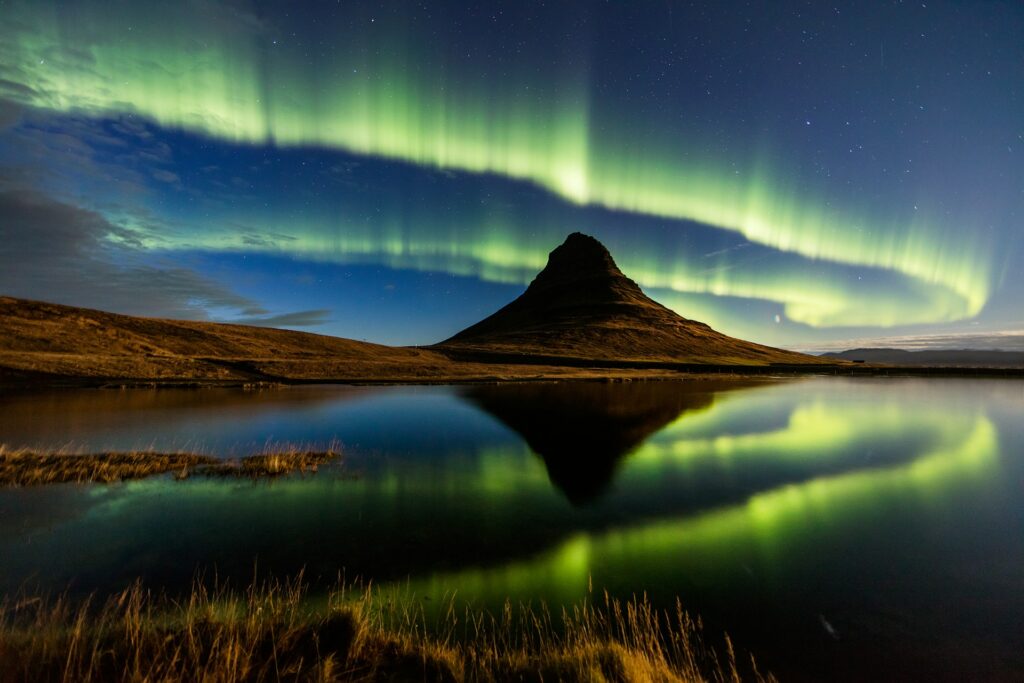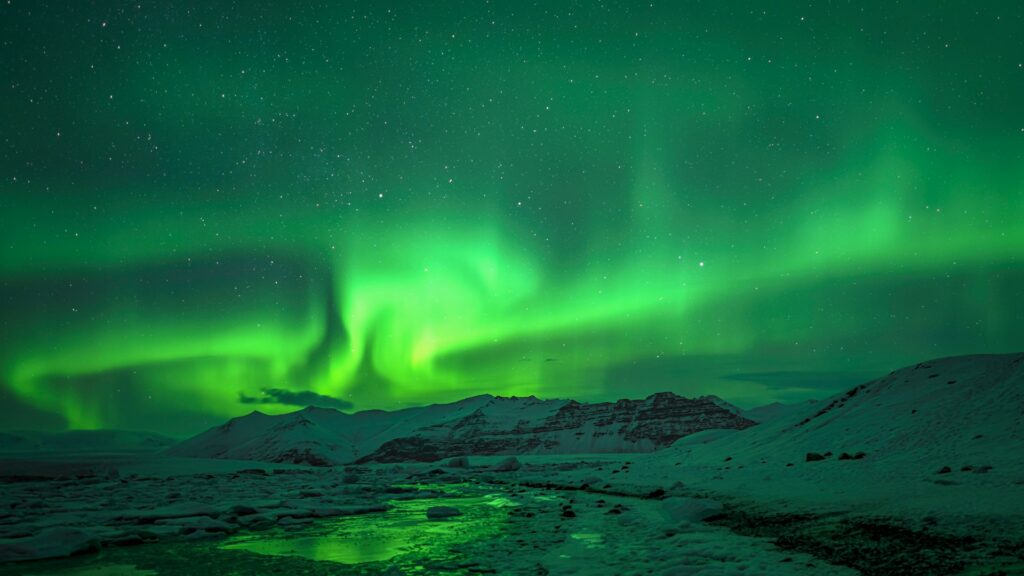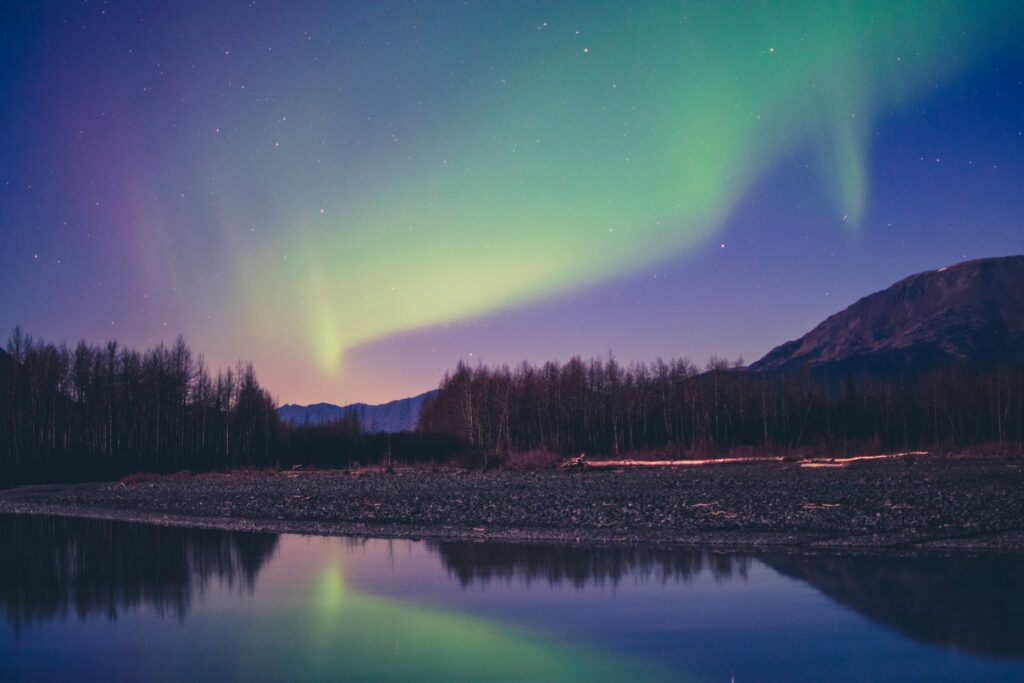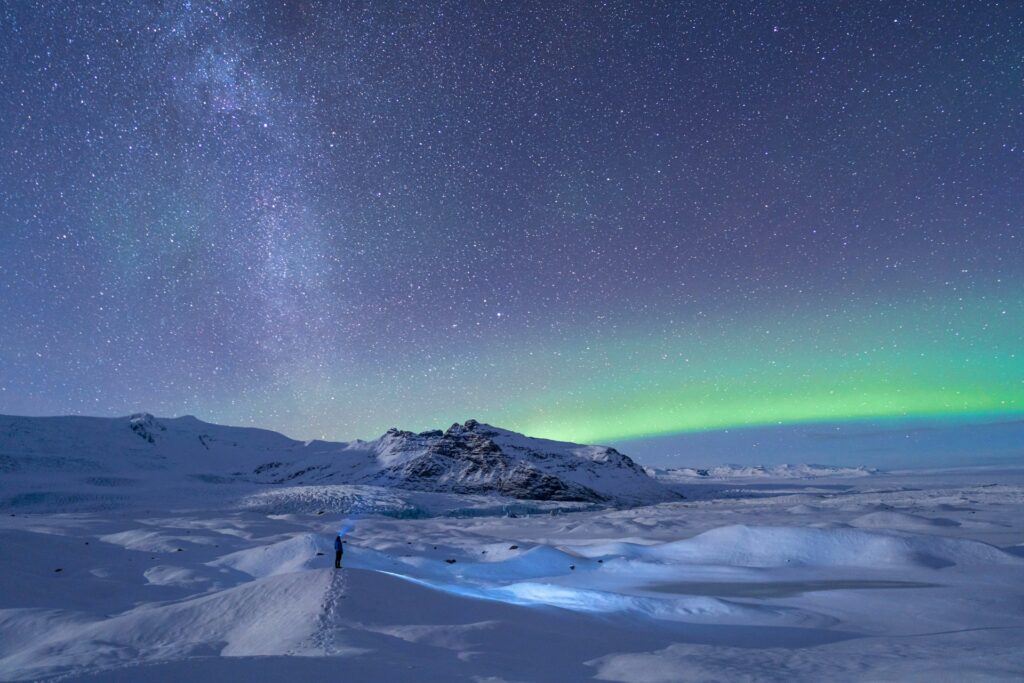The Northern Lights, scientifically known as the aurora borealis, are a mesmerising natural phenomenon that has captivated humans for thousands of years.

Visible primarily in the high latitudes near the Arctic Circle, these ethereal lights dance across the sky in vivid shades of green, pink, red, blue, and violet, creating spectacular, unforgettable displays. Historically, they have inspired countless myths and cultural legends among Indigenous communities, Vikings, and ancient civilisations who regarded them with awe and reverence. Indigenous cultures often viewed the aurora as spirits or omens, while Norse legends linked them to the reflections from the armour of Valkyries escorting fallen warriors to Valhalla.
Beyond their beauty and mythology, the aurora borealis serves as an essential indicator of Earth’s atmospheric and geomagnetic processes. Auroras are primarily driven by interactions between solar particles and Earth’s magnetic field; however, recent research increasingly explores how climate change might influence their occurrence and visibility. Understanding precisely how global warming and associated atmospheric changes impact the visibility, intensity, and frequency of the Northern Lights is crucial for grasping the broader implications of climate change.
Understanding the Northern Lights

The aurora borealis occurs when charged particles—electrons and protons—emanating from the sun interact with Earth’s atmosphere. These particles are carried toward Earth via the solar wind, guided along Earth’s magnetic field lines toward the polar regions. Upon reaching the ionosphere, approximately 80 to 600 kilometres above Earth’s surface, they collide with atmospheric gases, primarily oxygen and nitrogen.
The energy from these collisions excites gas molecules, causing them to emit visible photons of light. Oxygen typically produces green and red hues; green is most common at lower altitudes (around 100-300 kilometres), while red occurs higher up (above 300 kilometres). Nitrogen, in contrast, is responsible for blue and purple hues visible at lower altitudes. The specific colours and intensity depend on factors such as the types of gases present, the altitude of the interactions, and the energy of the incoming solar particles.
Direct impacts of climate change on the Aurora Borealis

While climate change is primarily known to affect Earth’s lower atmosphere—the troposphere and stratosphere—it also exerts indirect influences that extend upward into the ionosphere, potentially affecting auroral phenomena.
Changes in atmospheric composition and density

Climate change significantly alters Earth’s atmospheric composition and density. Increasing concentrations of greenhouse gases, particularly carbon dioxide (CO₂), cause warming in the lower atmosphere but lead to cooling and contraction of the upper atmosphere, including the thermosphere and ionosphere. NASA research has shown that rising CO₂ levels result in cooler, denser conditions in the upper layers, leading to a shrinkage in the ionosphere.
This contraction could alter auroral processes by reducing the atmospheric density at higher altitudes, potentially affecting how charged particles interact with atmospheric gases. Fewer interactions might reduce the brightness or alter the altitude at which auroras typically occur, potentially shifting their visual characteristics over time.
Increased cloud cover and reduced visibility

Climate change dramatically affects global weather patterns, often increasing precipitation and cloudiness, especially in Arctic and sub-Arctic regions. Increased cloud cover majorly affects auroral visibility from ground level. Changes in climate drive more frequent and persistent cloud cover in areas traditionally ideal for aurora viewing, reducing the frequency of clear nights necessary for witnessing auroras.
Research from institutions like the National Snow and Ice Data Center confirms rising cloudiness trends in Arctic regions, directly linked to warming temperatures. As a result, this impacts local communities, researchers, and tourism sectors that rely heavily on the predictability and visibility of auroral events.
Indirect impacts through solar activity

Solar activity follows an approximately 11-year cycle marked by sunspots, solar flares, and coronal mass ejections, significantly influencing auroral intensity and frequency. Although climate change does not directly alter solar cycles, it does interact indirectly with climate-sensitive atmospheric processes influenced by solar activity.
Variations in solar activity can affect Earth’s climate patterns, particularly influencing the polar vortex—strong winds circling the Arctic region. Research has indicated that weaker solar cycles can disrupt the polar vortex, leading to altered weather patterns, increased cloud cover, and reduced auroral visibility (Phys.org). These indirect interactions illustrate the complex connections between solar activity, climate patterns, and auroral visibility.
Ongoing research and observations

Current scientific research continues to uncover intricate connections between climate change and auroral phenomena. Researchers from the University of Oulu have studied energetic particle precipitation associated with auroras and its impacts on the polar ozone layer. Their findings demonstrate that auroral activity can deplete ozone, affecting regional climate patterns and influencing the polar vortex’s stability.
At the University of Southampton, Dr. Daniel Whiter develops advanced techniques to measure the energy emissions of auroras, aiming to quantify their effects on the chemistry and temperature of the upper atmosphere. His research is crucial for enhancing climate models and predicting atmospheric responses to auroral activity.
Furthermore, NASA continues extensive research to explore relationships between auroras, climate change, and atmospheric processes, aiming to understand how future atmospheric conditions and geomagnetic changes might reshape auroral displays (NASA Auroral Studies).
Cultural and economic implications

Auroral visibility changes driven by climate change can substantially impact cultures and economies reliant on aurora tourism. Regions such as Iceland, Norway, Finland, Sweden, and Canada derive significant economic benefits from tourists eager to experience auroral phenomena. According to Visit Norway, aurora tourism is economically vital, particularly during winter when optimal viewing conditions attract large numbers of international visitors.
Increasing cloud cover and decreased visibility could negatively impact these economies, reducing tourist numbers and revenue. Additionally, Indigenous communities whose cultural identities and traditions are intricately linked to auroras face potential losses. For these communities, auroras represent more than beauty; they embody significant spiritual and ancestral meanings.
More research and attention is needed

The impact of climate change on the Northern Lights is complex and multifaceted, encompassing direct atmospheric changes, indirect solar influences, and broader cultural and economic considerations. Although driven primarily by solar and geomagnetic activity, the aurora borealis is increasingly subject to climate-induced atmospheric alterations, influencing its visibility and potentially its intensity and occurrence.
Continuing research into these relationships is vital for comprehending the broader impacts of climate change on Earth’s atmospheric systems. Such research ensures that the natural wonder of the Northern Lights remains preserved for future generations, maintaining its scientific, cultural, and economic significance.